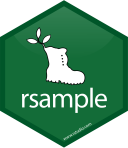2 - Your data budget
Machine learning with tidymodels
Data on tree frog hatching

Data on tree frog hatching
- Red-eyed tree frog embryos can hatch earlier than their normal ~7 days if they detect potential predator threat!
- Type
?stacks::tree_frogsto learn more about this dataset, including references. - We are using a slightly modified version from stacks.
Data on tree frog hatching
N = 572- A numeric outcome,
latency - 4 other variables
treatment,reflex, andt_o_dare nominal predictorsageis a numeric predictor

Data on tree frog hatching
tree_frogs
#> # A tibble: 572 × 5
#> treatment reflex age t_o_d latency
#> <chr> <fct> <dbl> <fct> <dbl>
#> 1 control full 5.40 morning 22
#> 2 control low 4.18 night 360
#> 3 control full 4.65 afternoon 106
#> 4 control mid 4.14 night 180
#> 5 control full 4.6 afternoon 60
#> 6 gentamicin full 5.36 morning 39
#> 7 control full 4.56 afternoon 214
#> 8 control full 5.43 morning 50
#> 9 control full 4.63 afternoon 224
#> 10 control full 5.40 morning 63
#> # … with 562 more rows
#> # ℹ Use `print(n = ...)` to see more rowsData splitting and spending
For machine learning, we typically split data into training and test sets:
- The training set is used to estimate model parameters.
- The test set is used to find an independent assessment of model performance.
Do not 🚫 use the test set during training.
Data splitting and spending
The more data
we spend 🤑
the better estimates
we’ll get.
Data splitting and spending
- Spending too much data in training prevents us from computing a good assessment of predictive performance.
- Spending too much data in testing prevents us from computing a good estimate of model parameters.
Your turn

When is a good time to split your data?
03:00
The testing data is precious 💎
Data splitting and spending ![]()
Accessing the data ![]()
The training set![]()
frog_train
#> # A tibble: 429 × 5
#> treatment reflex age t_o_d latency
#> <chr> <fct> <dbl> <fct> <dbl>
#> 1 control full 5.36 morning 36
#> 2 gentamicin full 5.37 morning 72
#> 3 gentamicin full 4.65 afternoon 141
#> 4 control full 5.42 morning 27
#> 5 control full 5.43 morning 27
#> 6 gentamicin full 5.38 morning 73
#> 7 gentamicin full 5.42 morning 68
#> 8 gentamicin full 4.75 afternoon 124
#> 9 control full 5.00 night 62
#> 10 control full 5.39 morning 25
#> # … with 419 more rows
#> # ℹ Use `print(n = ...)` to see more rowsThe test set ![]()
frog_test
#> # A tibble: 143 × 5
#> treatment reflex age t_o_d latency
#> <chr> <fct> <dbl> <fct> <dbl>
#> 1 control full 5.40 morning 22
#> 2 control low 4.18 night 360
#> 3 control full 4.63 afternoon 224
#> 4 gentamicin full 4.75 afternoon 158
#> 5 control mid 4.22 night 91
#> 6 gentamicin full 4.89 night 301
#> 7 control full 5.38 morning 2
#> 8 control full 4.80 afternoon 56
#> 9 control full 5.36 morning 11
#> 10 control full 5.40 morning 64
#> # … with 133 more rows
#> # ℹ Use `print(n = ...)` to see more rowsYour turn

Split your data so 20% is held out for the test set.
Try out different values in set.seed() to see how the results change.
05:00
Data splitting and spending ![]()
What about a validation set?
Exploratory data analysis for ML 🧐
Your turn

Explore the frog_train data on your own!
- What’s the distribution of the outcome, latency?
- What’s the distribution of numeric variables like age?
- How does latency differ across the categorical variables?
08:00
Split smarter
Stratified sampling would split within each quartile
Stratification
Use strata = latency
Stratification often helps, with very little downside
